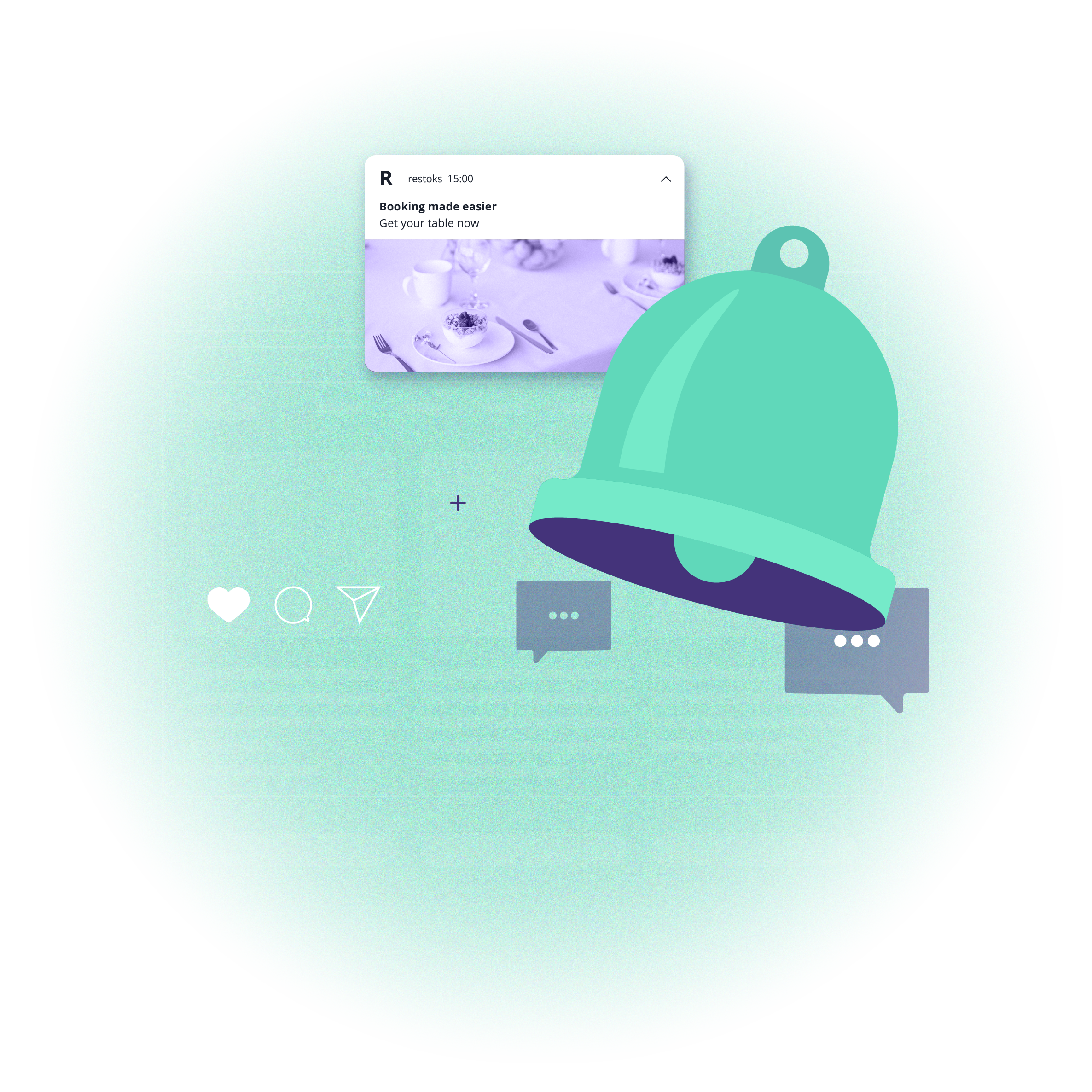Top 8 marketing communication trends in 2022
 Aleksandra Kozioł
Aleksandra Kozioł
This time, the introduction will be short. Global marketing is rapidly changing, especially after the outbreak of the covid-19 pandemic. What can you expect in marketing communication in the coming year? And what should you include in your marketing strategy? Let’s have a look!
Of course, the list of trends and technologies that will shape marketing communication in the following months is longer, but we listed eight of the most important trends that should be visible in the vast majority of sectors.
Here’s what we decided to include in our list:
Growth and improvement of conversational AI
Customer service automation is here, and it’s here to stay. More and more companies implement smart assistants (chatbots and voicebots) that answer the most frequent questions and execute simple, repetitive tasks. The reason is apparent – these assistants save a lot of time and enable you to offer 24/7 service without the need to hire additional consultants/agents.
According to Statista, the number of digital voice assistants in use worldwide will exceed 8.4 billion in 2024:

Image source: Statista
Perhaps now is the best time to invest in a chatbot or a voicebot, especially given that customers have become used to them. Earlier this year, Gladly.com conducted a Customer Expectations study. Over 50% of respondents said they find chatbots helpful when they don’t want to wait for a real person or have a simple question to ask:

Image source: Gladly
Further personalization
Personalization is another strong trend clearly visible in marketing and e-commerce worldwide. Marketers use this technique to reach users with tailor-made messages and offers. As a result, customers, e.g., visiting an online store, see product recommendations tailored to their interests and previous purchases. Personalization engines have become more and more effective, and the majority of them are based on AI-related technology called machine learning. Thanks to ML, these algorithms have recently become much more useful as their recommendations are more and more accurate. We are certain that personalization will be a marketing buzzword for many months to come.
Especially given that customers highly appreciate this approach:

Image source: Accenture
One of the greatest advantages of this technology is its versatility. You can use personalization almost everywhere – in email marketing, online stores, web/mobile apps, social media communication, and, of course, push notifications.
More omnichannel strategies
Granted, omnichannel has been around for several years now. The popularity of this marketing strategy will only grow. Primarily because customers simply expect that. Today, the number of channels customers use is mind-boggling. And it’s the brands’ role to keep up with their customers and be exactly where they are. That’s why more and more businesses invest in new communication channels and techniques such as web and mobile apps, social media profiles, affiliate marketing, push notifications, click&collect, and the internet of things.
In the last year’s edition of Gladly’s report, as much as 86% of customers said they expect conversations with agents to move between diverse channels seamlessly. And these channels are as follows:

Image source: Gladly
At the same time, that’s a list of necessary channels in your marketing communication. Of course, this list will expand. For instance, the internet of things has been one of the major trends in the past years. Thanks to IoT, customers can communicate with your brand via smartwatches and even… fridges. Many companies decided to opt for headless commerce to keep up with this rapidly changing communication ecosystem. It’s a solution that enables you to adjust your website seamlessly to communication channels that don’t even exist yet! Read more about headless commerce in one of our recent blog posts.
Adaptation to a cookie-less world
Back in January 2020, Chrome, Google’s web browser, announced their path towards making third-party cookies obsolete[Chromium Blog]. Ever since marketers have been looking for ways to target and communicate with customers in a coming cookie-less world. Without a doubt, it’s a huge game-changer for the entire marketing and e-commerce industry. This doesn’t mean that we’re helpless, though. After all, first-party cookies (gathered while users are on your website) are still here. Plus, strategies like contextual and account-based marketing will be more and more popular.
This begs the question – are you ready for the cookie-less world? We will talk more about this question in one of the following blog posts.
Social commerce
With over 200 million companies and 2.8 billion monthly active users [Fourth Quarter 2020 Results Conference Call], Facebook is the biggest social media platform ever. And they showed us that social commerce was a real thing when they introduced their new service – Facebook Shops, back in May 2020 [Facebook Newsroom]. With Facebook Shops (available also on Instagram), companies can easily set up an online store directly via this social media platform.
With Facebook Shops, you can:
Showcase products in your offer
Divide them into categories and collections
Allow your customers to place an order directly via this social media platform. It all happens with just several clicks. There is even the Checkout feature meaning you don’t have to leave the platform to finish an order. Unfortunately, this option is available only in the United States so far.
This shows the clear direction – social commerce will grow. Facebook is something more than just a platform to meet with friends and share funny cat videos. It’s a daily news source and a place where people discover new brands and services.

Image source: Oberlo
Therefore, it’s natural to purchase products via Facebook, Instagram, and shortly, via other social media platforms, too.
Voice search and voice commerce
Although voice commerce and voice search are still in their infancy, this trend is growing rapidly. Predictions are that by the end of 2022, over 50% of households will own a smart speaker device [Invoca]. You have to know that people who already own such a device use it frequently, as a PwC study shows:

We can expect that soon, customers will more willingly use their voices to search for products and information on the Internet. Of course, at this point, someone might say, “it’s impossible – after all, you have to see the product before you purchase it!” And that’s true. Voice commerce makes a case for itself when you want to order a specific product that you already know or ordered in the past.
And don’t forget that almost all of the tech giants have their voice assistants. Google has Assistant, Apple has Siri, Amazon has Alexa, Microsoft has Cortana, and Samsung has Bixby. There sure will happen a lot in voice commerce and voice search in the coming years.
AR and VR
Augmented reality and virtual reality are just perfect for enabling customers to get acquainted with the product they intend to buy more thoroughly. The list of companies using AR and VR is constantly growing. Take a look at this example of an AR feature used by IKEA to help customers decide if the specific piece of furniture will fit their living room:
And what about virtual reality? This technology was associated mostly with entertainment until recently, but no more. Retail has quickly understood the potential of this tremendous technology. For example, an American home improvement retail chain called Lowe’s has something called Holoroom – a place when customers can using VR, see how their future house will look like based on the products they’ve selected from the Lowe’s offer:
Push notifications
Lastly, we want to talk about push notifications. Their popularity grows rapidly because of three reasons:
They are versatile. If you have a website, you can use them to promote your products and services, rescue abandoned carts, and share important news. The type of your business doesn’t play the main role.
They are quick and easy to use. As you know, it’s all based on short notifications displayed in an Internet browser or in a mobile application. You don’t have to set and optimize tens of different options just to get started. On the contrary, sending a straightforward campaign will take just a few minutes!
They don’t need additional software, apps, or even cookies (remember what we told you about the cookie-less world?) to work. All you need is a user’s consent. When that’s granted, you’re good to go. And more importantly, no ad blocker can stop them from displaying.
If you’d like to see push notifications in action, take a look at our use case section. Web push is extremely popular, especially in the e-commerce sector. Online stores use it to rescue abandoned carts, inform about new arrivals, distribute vouchers and promo codes, offer free shipping, and display messages to increase the retention rate.
Moreover, push notifications are very efficient, too!

If you want to find out more about push notifications, feel free to drop us a line! Our team is always at your service!

Content Specialist @PushPushGo
Editor and writer. She is interested in media and new technologies.
Try PushPushGo to engage and connect with your audience.
Create an account and start testing!




-t7ofpvw3t7.webp)
